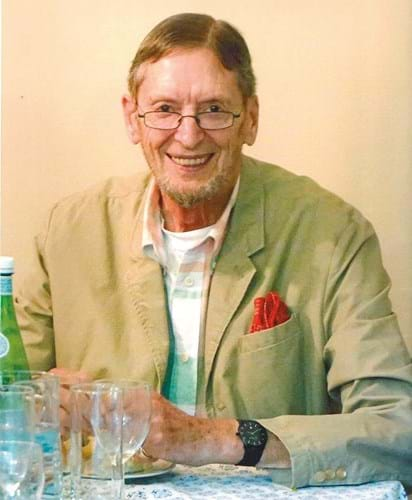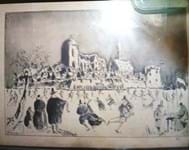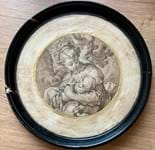Martin began his career in 1948 when he was taken on by Bernard Perret of Delomosne & Son Ltd, dealers in glass and ceramics at that time situated in Campden Hill Road.
The company was well established having been founded in 1905 by Bernard’s mother.
Martin quickly made his mark with the discovery of a goblet in the house of his old nanny in Devon. It was being used for wild daffodils, which grew nearby. The goblet was perhaps one of the rarest of all English glasses made by the 16th century glass maker Giacomo Verzelini. It is now in the collections of the Fitzwilliam Museum in Cambridge.
Delomosne was already known for its work with glass chandeliers, Bernard having discovered the maker’s mark William Parker when restoring the important suite of chandeliers in the Assembly Rooms in Bath.
Special interest
With a natural mechanical turn of mind and skill with his hands, Martin soon made this his special interest, which culminated with the publication of his book, The English Glass Chandelier, in 2000. (A volume referenced by sale rooms and museums all over the world.)
He gave generously of his time serving on the council of the BADA for many years, vice chairman for two of them and as editor of the BADA Journal.
Martin was on the executive committee of the Antique Dealers’ Fair, namely Grosvenor House, and subsequently at Burlington House. He lectured at West Dean College of Art and assessed the work of students studying the conservation of ceramics and glass.
In 1997 he was presented with a Long Service Award by the BADA.
He was always particularly helpful with his great knowledge of English glass to young people whether they were starting out in the trade or writing on the subject of glass. The pinnacle of his career came in 2007 when he was awarded an MBE in the Queen’s Birthday Honours list ‘For services to Antique Glass’.
Wicked sense of humour
Those who knew Martin at all will remember a tall and distinguished looking man with a ready laugh and a wicked sense of humour.
Those who knew him well found him a delightful companion with a wide range of interests. He could write well and was the author of numerous articles on glass and porcelain.
He was a skilled painter in watercolour and muralist in the mould of Whistler. He was a fine gardener and loved early music, especially choral. The church played an important role in his life and he supported his parish church wherever he lived.
In 2009 Martin retired in order to care for his wife Sara whose health was declining. Following her death in 2013, he took himself on holidays where he could follow his passion in architecture. His last few years were marred by failing eyesight which he endured with typical stoicism.
He will be greatly missed.
From Tim Osborne












